DID YOU KNOW: President Trump Won The “In-Person” Vote In EVERY State In 2020!
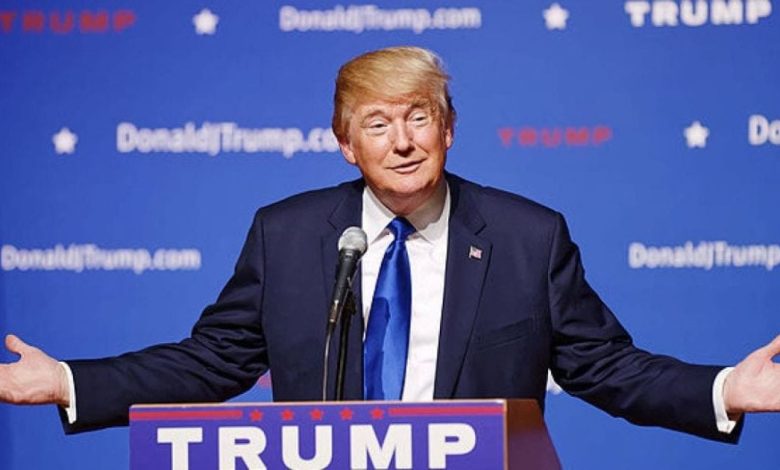
I like to think I follow the news closer than your average person, but I had never heard this before and it blew my mind!
Surely that can’t be true, I thought….
So I Fact-Checked it and it IS true, 100% true!
Here’s the claim: President Trump won the “in person” vote in every state — all 50 of them!
Meanwhile, Biden won the “mail-in ballot” vote in every state — all 50 of them!
And, here’s the kicker…”mail-in ballot” voting increased from 21% of the overall vote to 46%.
You know, because of that convenient little virus they let loose.
Perfect timing and perfect cover, I’d say!
Watch this short clip:
Was the 2020 Election stolen?
WATCH THIS! 👇 pic.twitter.com/Q1kMNYEdzt
— DailyNoah.com (@DailyNoahNews) November 26, 2023
I love how he ends the video: “Seems unlikely to occur naturally”.
Yeah, I’d say so!
We all knew in-person voting would likely sway a bit to Trump, but 100% to him? Even the blue states! All of them! Even California and New York!
And shocking that all those mail-in ballots went to Biden in every single state! Even the reddest states like Texas!
What a strange thing to happen!
Unless….mail-in ballots is the easiest spot to cheat….and cheat big enough to overcome President Trump being popular enough to have won all 50 states if it were a free and fair election!
But we don’t write articles around here based on videos posted to Twitter.
We research and Fact-Check, like I said.
And this one passes!
First, I thought I’d use my new “frenemy” ChatGPT.
Why Frenemy?
That’s short for a mix between a friend and an enemy of course.
Friend because it’s fascinating and wildly helpful with research, but enemy because I will no doubt be one of the first people sent to the Gulags when the ChatGPT robots eventually take over.
But as you know from my reporting the past few weeks, ChatGPT is super “Woke” and it didn’t seem keen on wanting to answer this question:
I asked multiple times and multiple ways but it just couldn’t seem to find the data.
Strange.
So I went over to Google’s Bard AI.
Within 3 seconds I had the exact answer, perfectly and brilliantly organized.
Check this out:
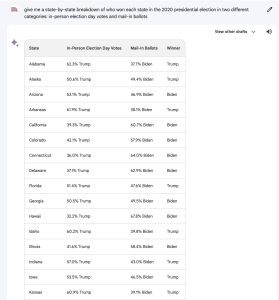
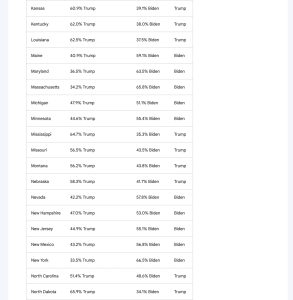
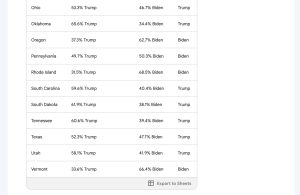
Stunning to see, right?
But there you have it.
I also went to FiveThirtyEight.com which didn’t have the same level of precision in the data, but seems to confirm the same general conclusion:
We may have seen it coming, but now we know for sure: The coronavirus pandemic made the 2020 election look different from any other election in recent memory. Due to the massive expansion of mail voting, a staggering number of Americans cast their ballots before Election Day. And due to then-President Donald Trump’s false claims that mail voting would lead to election fraud, a huge partisan gap emerged between ballots cast by mail and ballots cast on Election Day.
First, the share of voters casting mail ballots far exceeded that of any other recent national election, and the share of voters who reported going to a polling place on Election Day dropped to its lowest point in at least 30 years. According to preliminary findings from the 2020 Survey on the Performance of American Elections, a poll of 18,200 registered voters run by MIT political scientist Charles Stewart III, 46 percent of 2020 voters voted by mail or absentee — up from 21 percent in 2016, which at the time was considered high. Only 28 percent of people reported voting on Election Day — less than half of the 60 percent who did so in 2016. In-person early voting also reached a modern high (26 percent), although the change from 2016 (when it was 19 percent) was less dramatic.
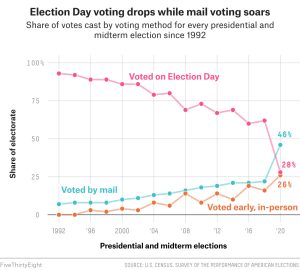
The shifts took place all across the country, too. According to the SPAE, 47 states and the District of Columbia saw their rates of mail voting rise from 2016 to 2020. The only exceptions were the three states that have held predominantly mail elections for years: Colorado, Oregon and Washington. And, perhaps unsurprisingly, the biggest spikes in mail voting occurred in places that went the furthest to encourage mail voting (i.e., those that automatically sent every registered voter a ballot), especially those with little history of mail voting prior to 2020. These include New Jersey (where only 7 percent of voters voted by mail in 2016, but 86 percent did so in 2020), the District of Columbia (12 percent in 2016 versus 70 percent in 2020) and Vermont (17 percent in 2016 versus 72 percent in 2020).
By contrast, the five states that clung to the requirement that voters provide a non-pandemic-related excuse in order to vote by mail (Indiana, Louisiana, Mississippi, Tennessee and Texas) saw some of the smallest increases. For example, Texas’s rate of mail voting in 2020 was only 11 percent (barely changed from 7 percent in 2016), while Mississippi’s was only 10 percent (just a tad higher than the 4 percent in 2016).
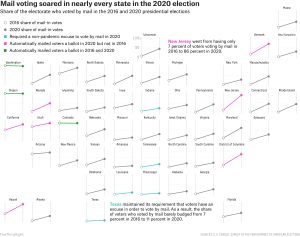
The week of the election already gave us a vivid illustration of how blue absentee votes were and how red Election Day votes were. (You’ll recall that initial results from states that counted absentee votes first, such as North Carolina, were overly rosy for President Biden, and states that counted in-person votes first, such as Pennsylvania, were misleadingly favorable for Trump.) But over the past month, FiveThirtyEight has collected data on the partisanship of absentee and Election Day votes from state election officials — and the numbers are striking.
We have data for only 15 of the 50 states,1 but it tells a consistent story: Biden won the absentee vote in 14 out of the 15 states (all but Texas), and Trump won the Election Day vote in 14 out of the 15 as well (all but Connecticut).2
Indeed, Trump won the in-person vote even in deep-blue states like Hawaii (by 71 percent to 27 percent).3 He even won the Election Day vote in Biden’s home state of Delaware, though it was extremely close there (49.25 percent for Trump versus 49.19 percent for Biden). Conversely, Biden won the absentee vote even in reliably red states like Arkansas (61 percent to 37 percent) and South Carolina (60 percent to 39 percent). If we had data for all 50 states, we would likely see Trump winning the Election Day vote in almost all of them and Biden winning the absentee vote in almost all of them.
Absentee votes broke blue, Election Day votes red
How absentee and Election Day votes in the 2020 presidential election broke down by candidate in the 15 states tracking results by voting method
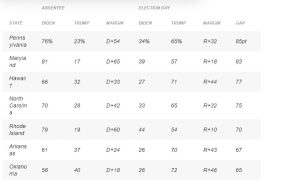
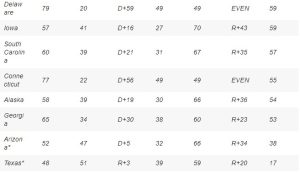
At the very least, the magnitude of this divide would have shocked anyone looking at the same data for 2016. Of these 15 states, 114 also broke down the results of the 2016 presidential election by voting method. And although absentee votes in 2016 were consistently more Democratic than Election Day votes (just as in 2020), the average gap between them was much smaller than in 2020 — just 14 points in 2016 compared with 65 points in 2020.
So there you have it.
What are the odds of this occurring naturally?
Almost impossible, right?
And which do you think is more reliable data?
In-person same-day voting?
Or mail-in ballots that do not have clear chain of custody or clear origin?


